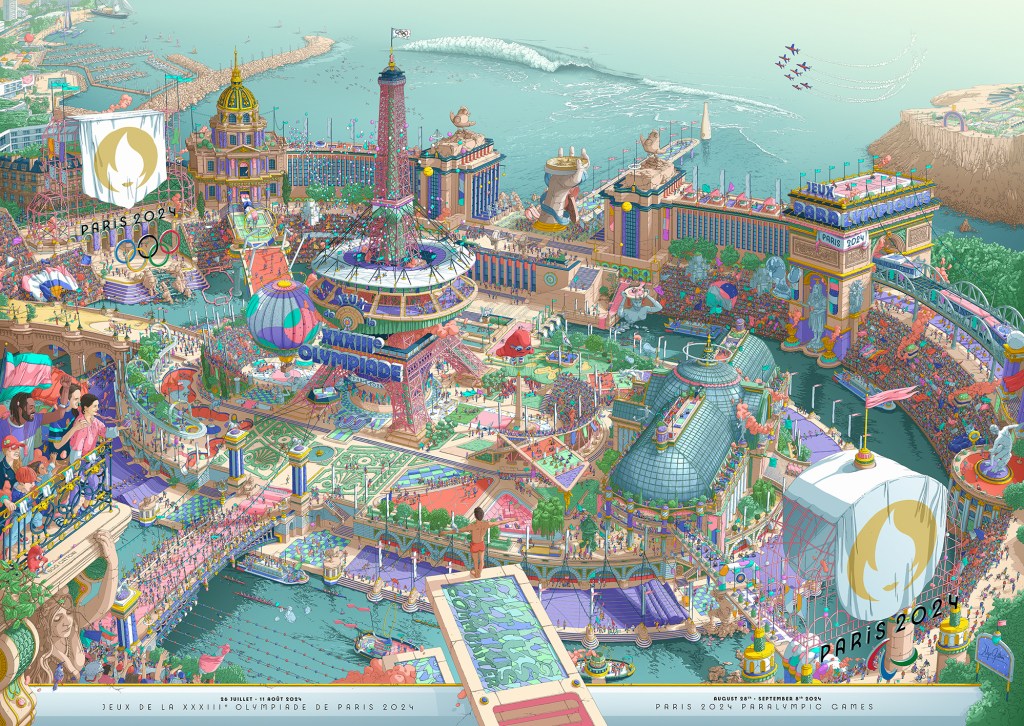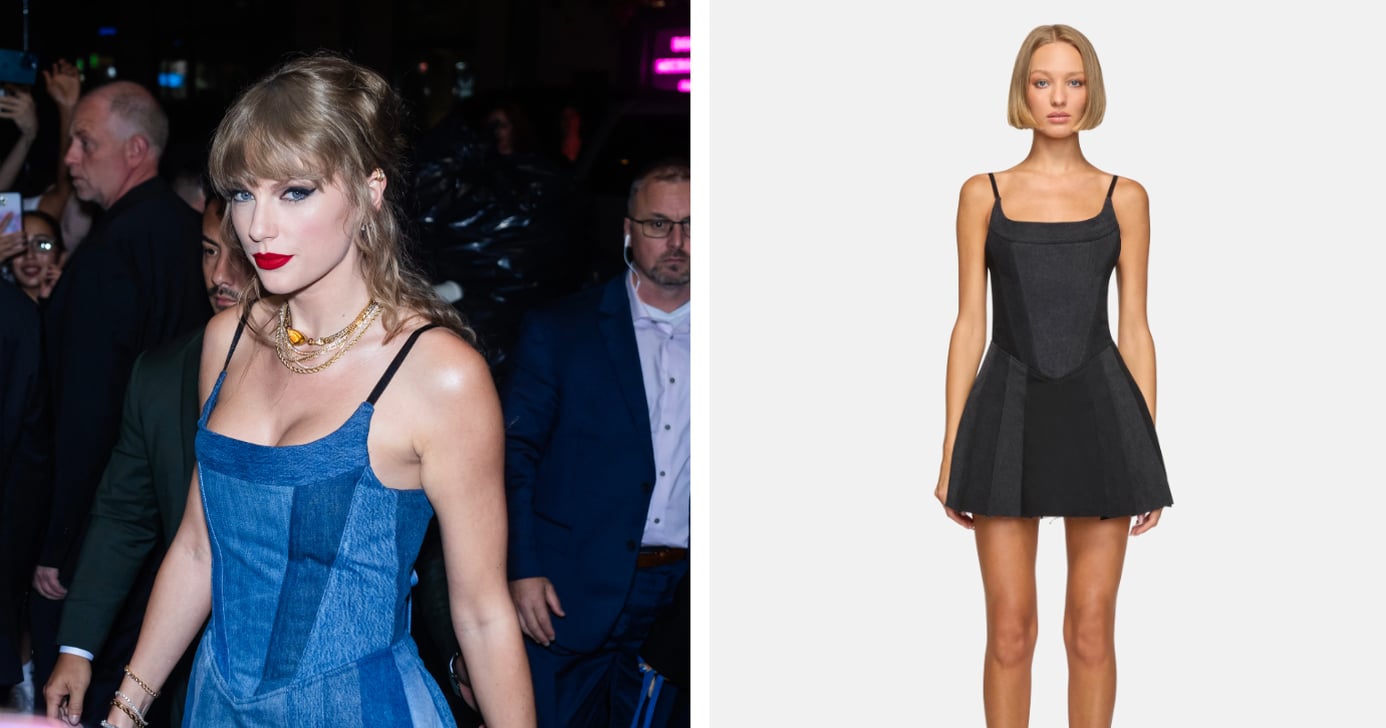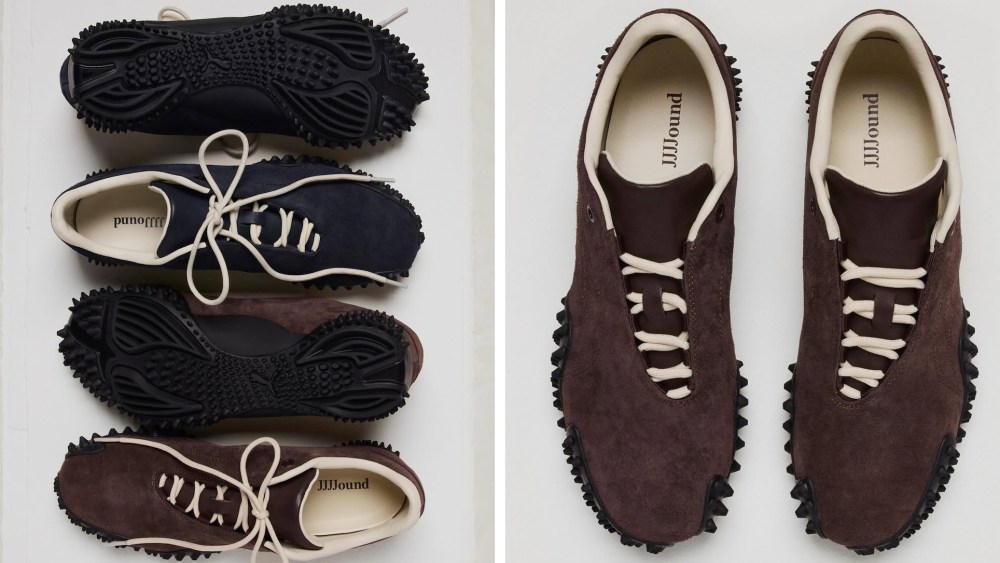PARIS — With less than 150 days left until the Olympic flame reaches Paris, the 2024 Olympic and Paralympic Games are about to be writ large around the City of Light.
The official posters of the Paris 2024 edition have been revealed as a utopian diptych right out of the imagination of French illustrator and artist Ugo Gattoni, 36.
Although they will be used individually, the two posters come together in one surreal cityscape in which telescoped architectural features and monuments of Paris as well as memorable moments of the Games, including the arrival of three-masted Belem boat bringing the Olympic flame to France, the torch relay, the opening ceremony on the Seine and the “Marathon pour Tous” race, open to the public.
Paris 2024 president Tony Estanguet described the posters as “a veritable fresco showcasing sport in the city” and said they were an ode to the ”Games wide open” motto of the edition. “They tell the story of our Games, a story that is at once festive, moving and universal, and that speaks to each and every one of us,” he declared.
“I wanted for us to tell the story of Paris 2024, or rather of this project and the vision we had, and it was important to transmit all these messages through the official posters, to fill them with meaning and not just have a logo on a background,” the event’s head of design Joachim Roncin told WWD in a preview at the artist’s atelier. “I hope people discovering [them] will understand the joy and festive side we are expecting.”
The person for the job in his opinion was Paris-born Gattoni, whose intricately detailed style which blends hyperrealistic detailing into surreal fantasy universes has starred as a scarf for Hermès, a winter wonderland for Diptyque’s 2020 holiday campaign and works for Cartier and Ruinart.
Ideas came thick and fast after their initial conversations in June 2023, Gattoni recalled. “After he presented the universe of Paris 2024, all the symbolism, all the values and everything he’s been committed to for years, a very detailed sketch came to me,” he said.
“I like creating a global universe where each composition, each frame still works independently when you get closer,” the illustrator continued, of the two designs. This is true of the scene once split into a pair of posters, but also of each minute and intricately detailed scene one spots when zooming in.
Although the Parisian native was no stranger to depicting his hometown and having it as a muse, designing the 33rd edition of the Olympic poster added a challenge.
“I looked at the other 32 and realized that it had to be coherent and work in 100 years if it’s brought out again,” he said. “I gave it a solid academic basis in terms of architecture but improbable perspectives.”
That’s why he added the Stade de France arena as a ring around the Eiffel Tower, collapsed distances to add the hilly surroundings of the port of Marseille, Tahiti’s famous Teahupo’o wave and even the English coastline, a nod to the birthplace of the Paralympic Games, on the horizon.
A closer look turns up plenty of symbols, visible or woven in. Take the Olympic rings, which are represented in their five-color version in the scenery but also returned as the wrought-iron banister. There are also doves instead of Paris’ infamous pigeons, for peace; statues of France’s national symbol Marianne, and even the same number of male and female characters in the foreground, in a nod to the equality of the Paris 2024 games.
But what delighted Roncin the most, a reaction he hopes will be shared by everyone and especially the youngest generations, are slapstick scenes such as athletes running so hard the track warps into a marshmallow-like ribbon, posing for selfies and interviews or simply laying down on the ground after competing.
And for those who feel this could be the setting for an Olympic version of “Where’s Waldo?,” Gattoni revealed he’d hidden eight versions of the Phryges, the mascots of this edition.

Gattoni succeeded in transcribing the “slightly crazy spirit” of the Paris 2024 Olympics, Roncin said. “Drawing each character, each athlete was a painstaking work for a unique and exceptional result,” he enthused, revealing it had taken the artist no less than 2,000 hours — or around six months — to finish the complete illustration.
Another prominent feature is the chromatic palette Gattoni used, where soft tones dominate — in particular pink.
“It’s a non-gendered color and works very well with stone, sand, the gray and beige that are very Parisian tones,” Roncin said of this signature hue of the Paris Games. “It’s also not much used in urbanism and signage so it will really stand out, particularly in the metro.”
An initial estimate of 17,000 copies will be printed in different sizes for billboards and for sale, each design used individually. They will also be given out to during the Semaine Olympique et Paralympique event in schools and educational institutions in April.
Unveiled during an event at the Musée d’Orsay on Monday, where they were displayed in monumental five-meter-high formats for a month before moving to Musée Carnavalet, the illustrations will later be used on Games merchandise, ranging from postcards to jigsaw puzzles and coloring books.
At the preview, Roncin revealed the French Olympic committee had worked with Snapchat to add a QR code that will turn them into one of the first augmented reality posters.
Their reveal comes hot on the heels of the inauguration of the Olympic Village by French President Emmanuel Macron last week.
Other designs for the Games have already been revealed, including the Olympic and Paralympic medals imagined by Chaumet and minted by La Monnaie de Paris, which contain a piece of the Eiffel Tower; and the Olympic torch, signed by designer Mathieu Lehanneur, who is also designing the yet-to-be-unveiled Olympic cauldron.


